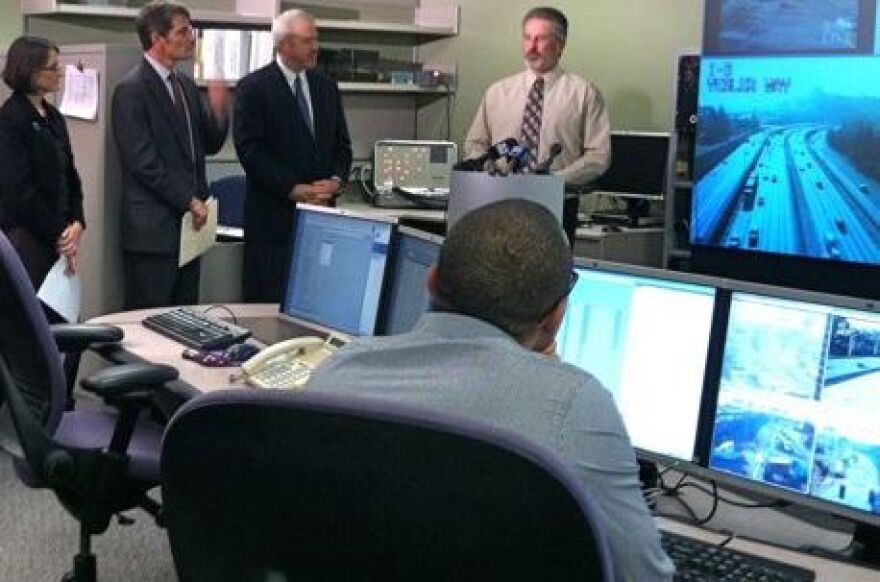For anyone who thought they were anonymous driving the city streets of Seattle, the truth is you’re being watched.
And while this might normally be upsetting, the all-seeing cameras positioned over freeways, bridges and intersections may soon be a lifeline during the impending nine-day closure of the Alaskan Way Viaduct.
Mayor Mike McGinn unveiled several technology upgrades developed by the Washington State Department of Transportation, Metro Transit and the City of Seattle, that should optimize traffic flow as construction on the south end of the viaduct gets underway this Friday.
The one the public is most likely to use is the addition of 12 streaming cameras.
"Visitors to our website can access real-time videos of several city streets including the West Seattle Bridge. It can be viewed on your home computer, on your laptop, as well as your iPhone or IPad or other smartphone devices before you leave your trip," McGinn said.
In addition to cameras
Other, visible upgrades, will be the addition of 25 buses along routes most affected by the shutdown, and extra police officers to help manage traffic.
And there’s a lot more going on behind the scenes that commuters won’t see. A new traffic responsive corridor on Aurora will automatically sense traffic conditions and adjust signal timing for better flow.
Brian Kemper explains how they work.
"We do have patterns that are set up that will handle an extra high volume of traffic and so we’ll move to those patterns if we need to. And then if there’s an in individual intersection that for some reason is the key point where there might be an extra amount of congestion, we can, from here, adjust the timing at individual intersections," Kemper said.
In all, $125 million has been invested in projects to keep traffic moving.
On the Web:


